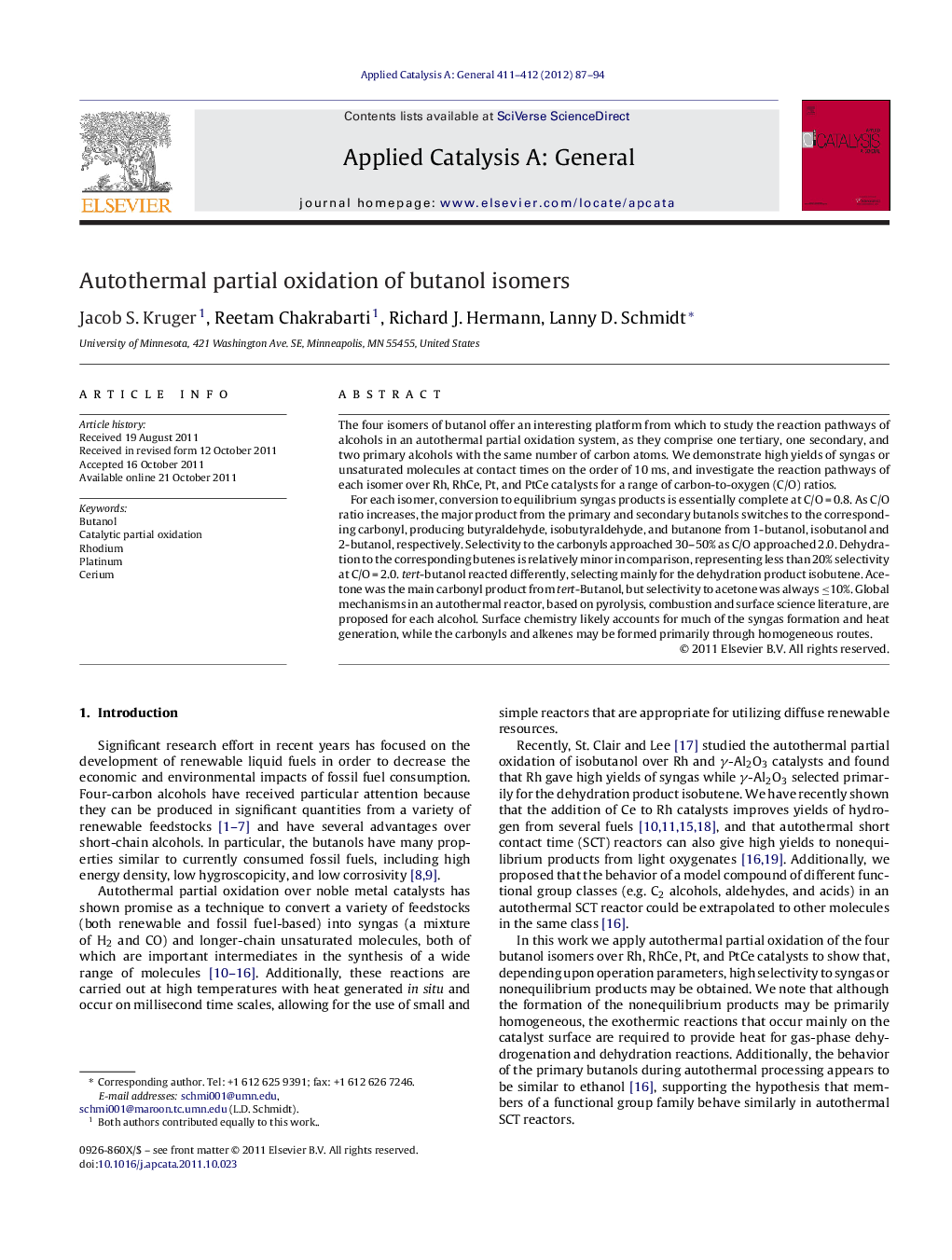| کد مقاله | کد نشریه | سال انتشار | مقاله انگلیسی | نسخه تمام متن |
|---|---|---|---|---|
| 41273 | 45883 | 2012 | 8 صفحه PDF | دانلود رایگان |

The four isomers of butanol offer an interesting platform from which to study the reaction pathways of alcohols in an autothermal partial oxidation system, as they comprise one tertiary, one secondary, and two primary alcohols with the same number of carbon atoms. We demonstrate high yields of syngas or unsaturated molecules at contact times on the order of 10 ms, and investigate the reaction pathways of each isomer over Rh, RhCe, Pt, and PtCe catalysts for a range of carbon-to-oxygen (C/O) ratios.For each isomer, conversion to equilibrium syngas products is essentially complete at C/O = 0.8. As C/O ratio increases, the major product from the primary and secondary butanols switches to the corresponding carbonyl, producing butyraldehyde, isobutyraldehyde, and butanone from 1-butanol, isobutanol and 2-butanol, respectively. Selectivity to the carbonyls approached 30–50% as C/O approached 2.0. Dehydration to the corresponding butenes is relatively minor in comparison, representing less than 20% selectivity at C/O = 2.0. tert-butanol reacted differently, selecting mainly for the dehydration product isobutene. Acetone was the main carbonyl product from tert-Butanol, but selectivity to acetone was always ≤10%. Global mechanisms in an autothermal reactor, based on pyrolysis, combustion and surface science literature, are proposed for each alcohol. Surface chemistry likely accounts for much of the syngas formation and heat generation, while the carbonyls and alkenes may be formed primarily through homogeneous routes.
Figure optionsDownload high-quality image (116 K)Download as PowerPoint slideHighlights
► Autothermal butanol gasification over Pt, PtCe, Rh, and RhCe catalysts.
► High yields to syngas and olefins from the four butanol isomers.
► Tunable product spectrum by varying fuel/O2 ratio.
► Qualitative mechanisms for butanol partial oxidation proposed.
Journal: Applied Catalysis A: General - Volumes 411–412, 16 January 2012, Pages 87–94